Fall in Love with These Heart-Shaped Houseplants: A Beginner’s Guide to Care
There’s something incredibly romantic about heart-shaped houseplants. They evoke feelings of love, warmth, and positivity, making them the perfect additions to any home—whether it’s for your own enjoyment or to share the love with someone special. Whether you’re new to houseplants or a seasoned green thumb, heart-shaped plants are beautiful, low-maintenance, and full of charm.
In this post, we’ll introduce you to some of the top heart-shaped houseplants, share care tips, and offer specific advice on light, soil, and watering preferences. Let’s spread the love with these gorgeous, leafy beauties!
Why Heart-Shaped Houseplants?
Heart-shaped plants are more than just cute additions to your home décor—they carry symbolic meaning as well. Hearts in nature often represent love, affection, and connection, making these plants perfect for gifting on special occasions like Valentine’s Day, anniversaries, or just to brighten someone’s day.
These plants can also serve as a reminder of self-care and growth. Plus, heart-shaped foliage is a great conversation starter—who wouldn’t want to talk about those unique, striking leaves?
So, if you’re looking to add some love to your home or gift something that’s as symbolic as it is beautiful, here’s a list of the top heart-shaped houseplants and how to care for them!
1. Heartleaf Philodendron (Philodendron hederaceum)
This is one of the most beloved heart-shaped plants because of its easy care and beautiful trailing vines. The Heartleaf Philodendron is an ideal choice for beginners, and its lush, deep green leaves bring a touch of vibrancy to any room.
Care Instructions:
- Light: The Heartleaf Philodendron prefers bright, indirect light but can tolerate low light conditions. Just keep it away from direct sunlight, which can scorch the leaves.
- Water: Water when the top 1-2 inches of soil feel dry to the touch. These plants prefer to dry out slightly between waterings, so avoid overwatering.
- Soil: Well-draining potting soil with organic matter works best. A mix of peat moss, perlite, and pine bark is a great option.
Fun Fact: This plant is also known for its ability to purify the air, which makes it both beautiful and functional!
Pro Tips:
- Keep the plant slightly on the drier side to avoid root rot.
- Trim any long vines to promote bushier growth, or allow them to trail for a beautiful cascading effect.
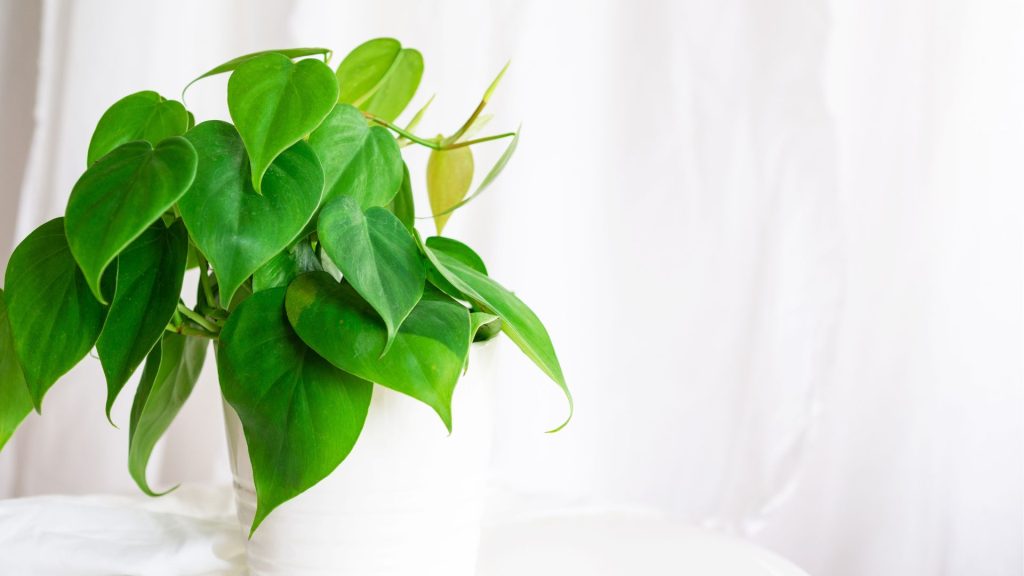
2. Hoya Kerrii (Sweetheart Plant)
The Hoya Kerrii, also known as the “Sweetheart Plant,” is famous for its thick, waxy, heart-shaped leaves. This slow-growing beauty is a perfect option if you want to spread some love in the form of a cute, low-maintenance plant.
Care Instructions:
- Light: The Hoya Kerrii prefers bright, indirect light. While it can tolerate a bit of direct sunlight, prolonged exposure can scorch the leaves.
- Water: Water the Hoya only when the soil is dry. Be cautious with watering, as this plant is drought-tolerant and prefers to stay on the drier side.
- Soil: Use a well-draining, cactus or succulent soil mix. You want the soil to be lightweight and quick-draining to prevent water from pooling at the roots.
Fun Fact: You can propagate the Hoya Kerrii by cutting a leaf and allowing it to root in water, giving you even more heart-shaped plants to share!
Pro Tips:
- Let it dry out between waterings—overwatering is the quickest way to harm this plant.
- Fertilize sparingly during the growing season, as this plant isn’t a heavy feeder.
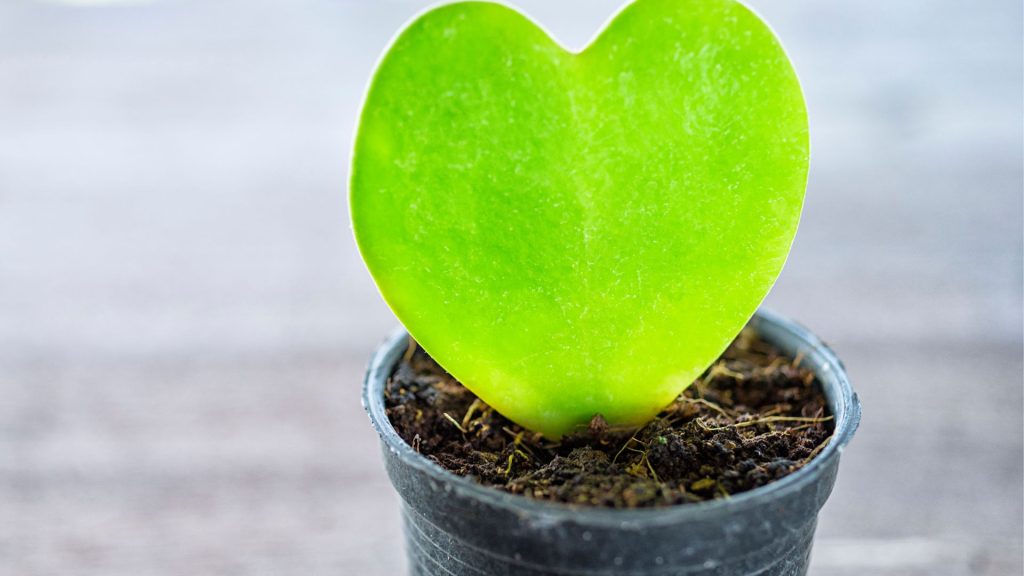
4. Caladium (Caladium bicolor)
Known for its colorful, heart-shaped leaves that come in vibrant shades of red, white, pink, and green, Caladiums are a fantastic choice for indoor gardeners. Their heart-shaped leaves make them an especially romantic plant for sharing the love.
Care Instructions:
- Light: Caladiums prefer bright, indirect light. They’re sensitive to direct sunlight, which can burn their leaves.
- Water: Keep the soil consistently moist during the growing season (spring and summer). In fall and winter, reduce watering as the plant enters dormancy.
- Soil: Caladiums love rich, well-draining, and slightly acidic soil. A mix of peat, pine bark, and perlite works well.
Fun Fact: Caladiums are typically grown as seasonal plants, and they may go dormant in the winter. You can store their tubers and regrow them the following year!
Pro Tips:
- When the plant enters dormancy in winter, reduce watering to prevent rot.
- Place your Caladium in a warm room with consistent temperatures.
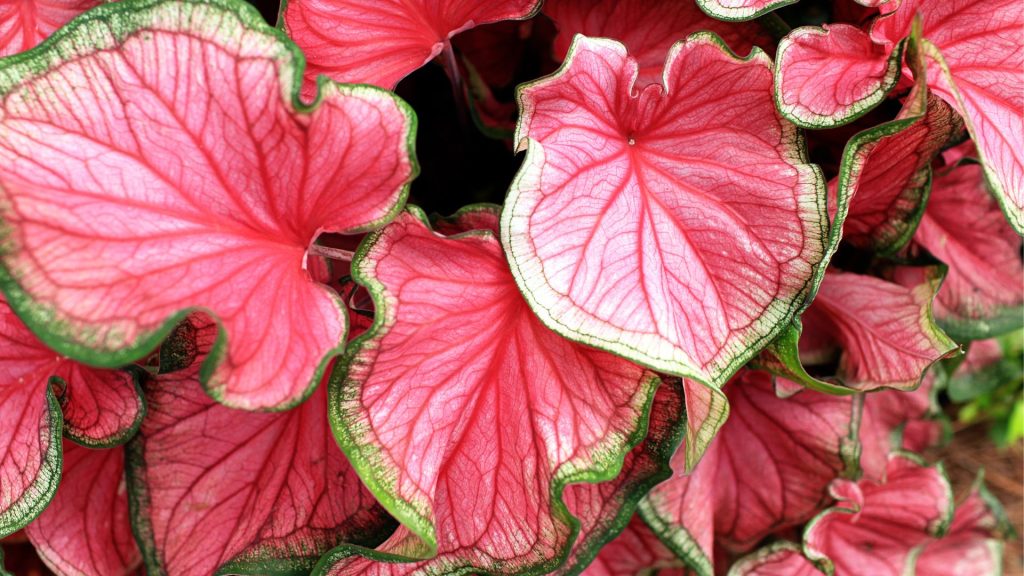
5. Sweetheart Vine (Ceropegia woodii)
Known for its trailing vines and heart-shaped leaves, the Sweetheart Vine is a delightful, easy-to-care-for plant. It’s perfect for hanging baskets or as a trailing plant in a decorative pot.
Care Instructions:
- Light: Bright, indirect light is best, but it can tolerate lower light. Too much direct sunlight can cause the leaves to burn.
- Water: Allow the soil to dry out completely between waterings. Overwatering can lead to root rot, so err on the side of dryness.
- Soil: A well-draining cactus or succulent soil mix is ideal for the Sweetheart Vine.
Fun Fact: This plant is sometimes called the “Chain of Hearts” because of its trailing, heart-shaped leaves that resemble a string of love.
Pro Tips:
- Don’t be afraid to trim it back to maintain the desired length and promote fuller growth.
- You can propagate this plant by cutting a section of the vine and rooting it in water!
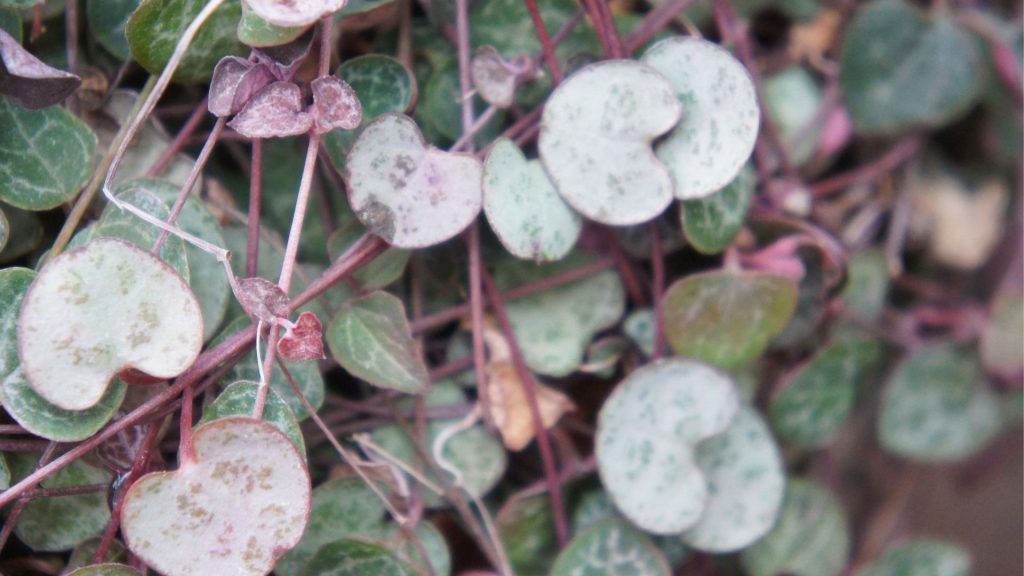
6. Spathiphyllum (Peace Lily)
Although it doesn’t have the classic heart shape of the other plants on this list, the Peace Lily is often included for its iconic, glossy, spade-like leaves that resemble hearts. The Peace Lily also produces elegant white flowers that add to its charm.
Care Instructions:
- Light: Peace Lilies thrive in low to medium, indirect light. Too much direct sunlight can burn the leaves.
- Water: Peace Lilies like consistently moist soil but hate sitting in water. Allow the top layer of the soil to dry out slightly before watering again.
- Soil: Well-draining, peat-based soil with added perlite for better aeration works well.
Fun Fact: Peace Lilies are great air purifiers and can remove toxins like ammonia, formaldehyde, and benzene from the air.
Pro Tips:
- Keep an eye on the leaves—if they start to droop, it may be a sign that the plant is thirsty.
- Wipe the leaves regularly with a damp cloth to remove dust and keep them shiny.
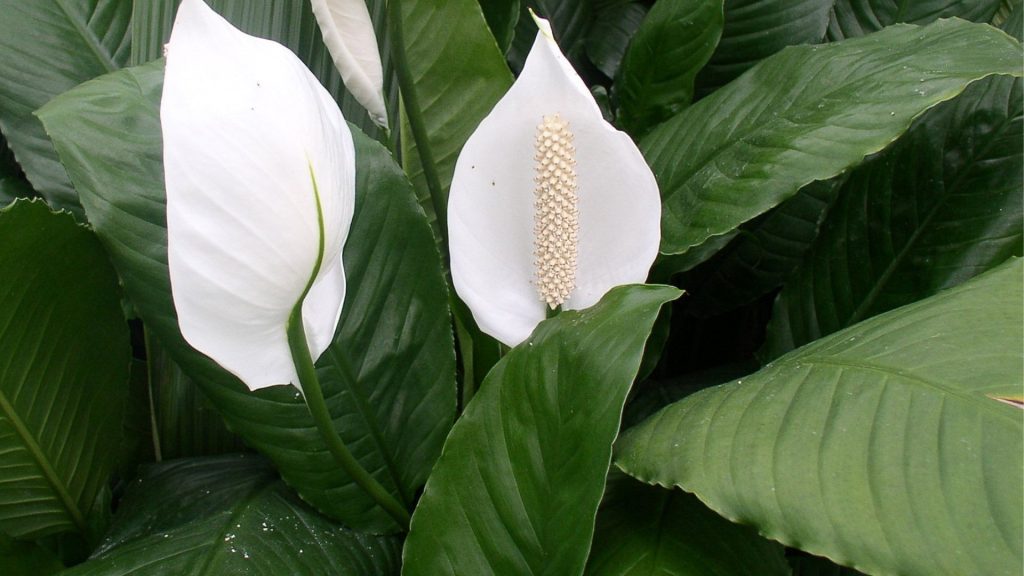
Which Heart-Shaped Plant Will You Share the Love With?
Heart-shaped plants are the perfect way to add beauty and a touch of love to your home. Whether you choose a low-maintenance Heartleaf Philodendron, a stunning Red-Leafed Heart Philodendron, or the gorgeous Sweetheart Vine, you can be sure these plants will make your space feel vibrant, warm, and full of positive energy.
Each of these plants comes with unique care requirements, but with a little attention to light, water, and soil, they will thrive and reward you with lush, heart-shaped leaves.
We’d love to hear from you! Which heart-shaped plant is your favorite? Do you have any tips or tricks for caring for these leafy love symbols? Share your thoughts in the comments below and let’s spread the love together!







